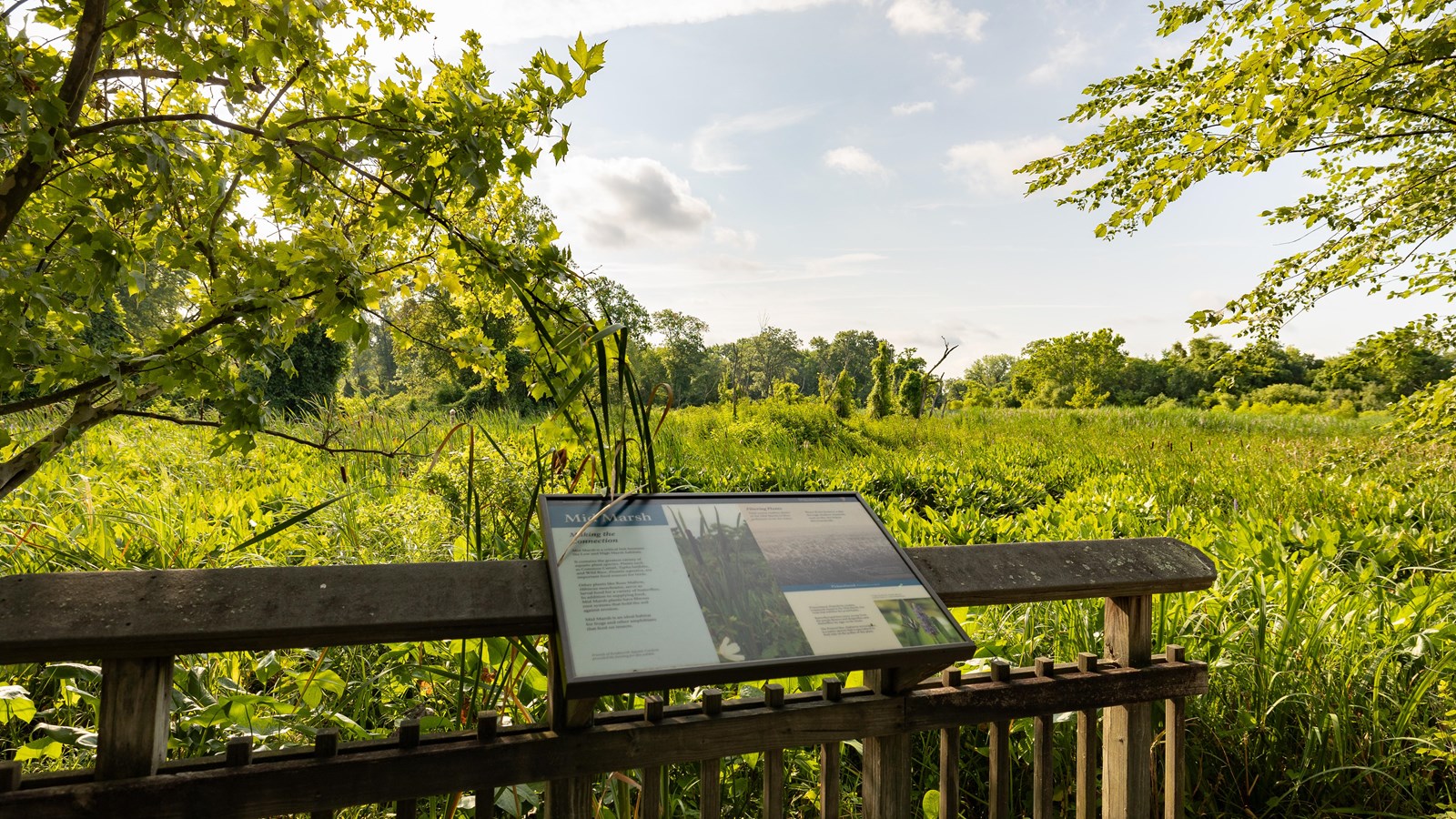Last updated: July 24, 2024
Place
Mid Marsh Viewing Platform

NPS / Kelsey Graczyk
Mid Marsh
Making the Connection
Mid Marsh is a critical link between the Low and High Marsh habitats.
It contains the greatest variety of aquatic plant species. Plants such as Common Cattail, Typha latifolia, and Wild Rice, Zizania aquatica, are important food sources for birds.
Other plants like Rose Mallow, Hibiscus moscheutos, serve as larval food for a variety of butterflies.
In addition to supplying food, Mid Marsh plants have fibrous root systems that hold the soil against erosion.
Mid Marsh is an ideal habitat for frogs and other amphibians that feed on insects.
Filtering Plants
Tidal action enables plants of the Mid Marsh to filter pollutants from the water.
Water flows in twice a day through shallow channels such as the one below this boardwalk.
Pickerelweed (Pontederia cordata)
Pickerelweed, Pontederia cordata, commonly found in the Mid Marsh, has roots that stabilize the pond banks.
Butterflies and bees enjoy nectar from the purple flowers and dragonflies and damselflies lay eggs on the stems.
The Pickerel Bee, Dufourea noveangliae, is a native species that is specialized to feed only on the pollen of this plant.
A Tiger Swallowtail, Papilio glaucus, butterfly feeds on native Pickerelweed.
